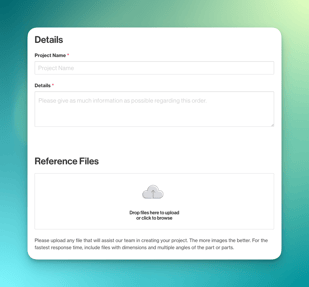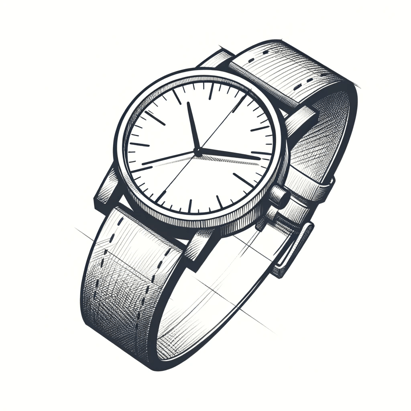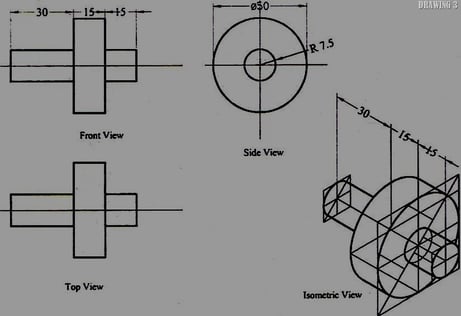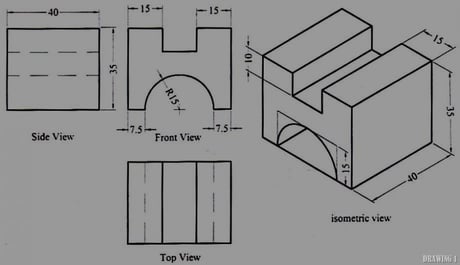Introduction and Overview
This article serves as a comprehensive guide to submitting your design and engineering projects to CADmore. It emphasizes the importance of using the submission form, details the type of services offered, and outlines the critical information required for a successful submission. The guide also explains the significance of providing detailed project descriptions, specific design requirements, and relevant reference materials to ensure a seamless and efficient project execution.
The Preferred Submission Process: Utilizing the Form
 Filling out the submission form on CADmore's website is the most efficient way to convey your project details. While other methods like email or chat are available, the form is designed to capture comprehensive information, ensuring a clear understanding of your requirements. Selecting the form corresponding to the CADmore partner who referred you is vital, as this ensures that your project is aligned with the right team and expertise.
Filling out the submission form on CADmore's website is the most efficient way to convey your project details. While other methods like email or chat are available, the form is designed to capture comprehensive information, ensuring a clear understanding of your requirements. Selecting the form corresponding to the CADmore partner who referred you is vital, as this ensures that your project is aligned with the right team and expertise.
To ensure a smooth project initiation, it's crucial to fill out the CADmore submission form thoroughly, providing detailed information and selecting the appropriate form based on your referral source.
Understanding CADmore's Scope: Design, Engineering, and 3D Modeling
CADmore specializes in design and engineering services, culminating in a 3D model suitable for manufacturing. This focus is crucial to understand as it shapes the deliverables and the information needed from you. A clear grasp of this scope will streamline your submission process and set realistic expectations for the project's outcomes.
The Importance of Accurate Project Information
When filling out the form, it is critical to include all relevant details about your project. This includes the overall objective, specific design requirements (style, color, materials), size/dimension specifications, preferred timelines, and industry-specific standards. The more detailed your information, the more accurately CADmore can understand and execute your vision.

The Importance of Detailed, Multi-Perspective Sketches
For an effective and accurate translation of your vision into a tangible design, it's essential to provide CADmore's team with detailed sketches and illustrations from multiple perspectives. These reference materials are crucial in understanding your design's aesthetic and functional aspects.
-
Multi-Angle Views: Provide sketches that show your design from various angles — front, side, top, and even isometric views. This comprehensive visualization helps in capturing every aspect of your design accurately.
-
Integration Details: Illustrate how different parts of your design fit together. This is particularly important for complex assemblies or products with multiple components.
-
Dimensional Accuracy: Include measurements and dimensions in your sketches. Precise dimensions are vital for the team to understand the scale and size of each component, ensuring the final product meets your exact specifications.
-
Contextual References: Include images or links to similar products alongside your sketches. These references can offer additional context, helping the design team to better understand your requirements and preferences.


Selecting the Right Manufacturing Process: Matching Volume, Material, and Design
When embarking on a manufacturing project, choosing the right process that aligns with your project's volume, material requirements, and design complexity is crucial. Each manufacturing method, from CNC machining to urethane casting, offers unique benefits tailored to different project needs. By understanding these distinctions, you can ensure that CADmore effectively aligns its services with your project's requirements.
-
CNC Machining: Best suited for low to medium-volume runs, ranging from one-off prototypes to several hundred units. This process excels in crafting precise, custom parts and is versatile enough to handle a variety of materials, including metals such as aluminum, steel, brass, and plastics like ABS and Nylon. It’s particularly advantageous for projects requiring complex geometries and high precision.
-
3D Printing is ideal for very low volumes, especially prototype development or small production batches. This method is cost-efficient for producing singular items or small quantities, typically under a few dozen. 3D printing can handle intricate designs and complex structures, utilizing materials like PLA, ABS, resin, and metal powders. Its layer-by-layer construction offers unparalleled design flexibility.
-
Sheet Metal Fabrication: This process is tailored for medium to high volume production, efficiently handling hundreds to thousands of units. It’s a staple in industries like automotive and aerospace, where durability is key. Sheet metal fabrication works well with materials like steel, aluminum, and copper and is particularly effective for producing large, flat parts that require bending or folding.
-
Injection Molding: The go-to choice for high volume production, injection molding is most cost-effective for manufacturing runs spanning from thousands to millions of units. It primarily focuses on plastic parts, utilizing materials such as polyethylene, polycarbonate, and ABS. This process is known for its high repeatability, excellent surface finish, and consistency.
-
Urethane Casting: Optimal for low to medium volume production, urethane casting is particularly beneficial for producing a few dozen to several hundred parts. It’s a versatile choice for prototypes and short-run parts, employing materials like polyurethane resins that can mimic a wide range of plastics and rubbers. This method is notable for its ability to capture fine details and offer a diverse array of textures and colors.
By carefully considering these factors, you can make an informed decision about which manufacturing process is most suitable for your project, ensuring that your collaboration with CADmore is both effective and efficient.
If you were referred to CADmore by a manufacturer, don't hesitate to consult them for their insights. These professionals possess extensive knowledge and experience in various manufacturing methods and can provide tailored advice, ensuring that your project aligns with the optimal process and materials.
Final Steps in the Submission Process
Once your form is filled out, including contact details and a zip code for billing, simply submit it. You'll receive immediate confirmation and access to the customer portal for ongoing communication. Remember, you can still add information or files after submission via the portal.
Completing the CADmore project submission form is just the beginning. Stay engaged through the customer portal for updates, queries, and additional information sharing.
Conclusion: Ensuring a Smooth Project Journey with CADmore
Submitting your project to CADmore is a straightforward process, designed to gather all necessary information for a successful project outcome. By following this guide and providing detailed, accurate information, you can expect a seamless experience from submission to completion. The CADmore team is committed to delivering high-quality design and engineering services, tailored to your specific needs and expectations.
